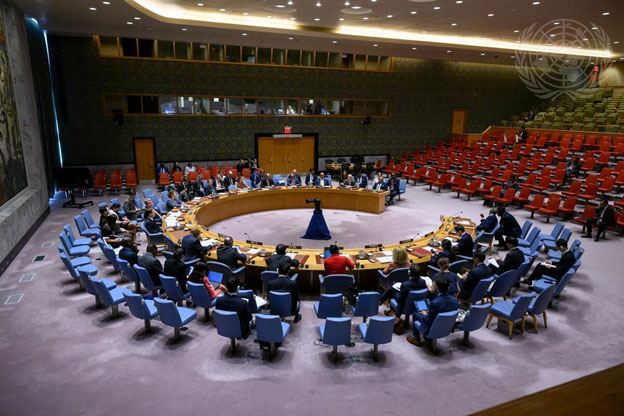UNITED NATIONS, Sep 24 (IPS) – Somalia is currently in the midst of a dire humanitarian crisis that threatens to destabilize the nation’s security. This crisis is a result of the Somali Civil War, which began in 1991. Altercations between clan-based operations have caused a host of issues over the years, including over 596 civilian casualties, according to the United Nations Assistance Mission in Somalia (UNSOM). Tensions have greatly intensified in 2024, with levels of internal displacement and food insecurity increasing rapidly.
“Our humanitarian colleagues tell us that since the beginning of the year, an estimated 150,000 people have been displaced by renewed clan conflict and ongoing military operations. This has intensified existing vulnerabilities and further worsened humanitarian needs”, stated Stéphane Dujarric, Spokesperson for the Secretary-General, at a press briefing at the United Nations (UN) Headquarters.
Levels of generalized violence in Somalia have seen a considerable uptick in recent years. The UN reports an increase in gender-based violence from 2022 onward, with cases of domestic violence and rape soaring among girls in displacement shelters. The United Nations Children’s Fund (UNICEF) estimates that 45 percent of girls are married off before reaching the age of 18.
Additionally, violence targeting Somali children remains high, with killings, recruitment, and sexual violence becoming more common, according to the Human Rights Watch (HRW). Children have been detained by Somali authorities due to suspicion that they are affiliated with the Al- Shabab armed group. Furthermore, attacks on schools have significantly exacerbated the ongoing education crisis in the country. The U.S. Agency for International Development (USAID) estimates that 85 percent of Somali children are not enrolled in school.
Widespread food insecurity and famine have been issues that have plagued Somalia for decades. From 2020 to 2023, Somalia had experienced its longest drought on record, with the resulting hunger crisis pushing communities to the brink of collapse. Heavy rainfall and flooding in the first quarter of 2024 have left over 4 million people severely food insecure, according to the Integrated Food Security Phase Classification (IPC).
Armed conflict over the past three decades has significantly impeded the growth of Somalia’s agricultural sector, exacerbating the hunger crisis. The International Rescue Committee (IRC) states that violent altercations have damaged Somalia’s “systems and infrastructure that would have provided a guardrail against climate and economic disaster”. There have also been reports of food and essential resources being burned by warring parties in recent years.
Somalia currently relies heavily on imports to prevent nationwide hunger. The World Bank states, “the economy remained heavily import-dependent as conflict has destroyed the economy’s productive capacity”. It is estimated that over 55 percent of the population lives in extreme poverty, with GDP growth remaining relatively stagnant.
The displacement crisis in Somalia is ranked as one of the most severe in the world. As of now, there are approximately 4 million people internally displaced, which is about 21 percent of the nation’s population.
The United Nations Office for the Coordination of Humanitarian Affairs (OCHA) estimates that 247,000 have been displaced from their homes due to heavy flooding. About 53,600 displaced peoples have been affected by the floods, with critical shelters being destroyed.
The World Bank adds that there are over 38,000 refugees in Somalia from bordering countries such as Ethiopia and Kenya, as well as Yemen. This influx of refugees has overwhelmed Somali displacement shelters, leading to overcrowding, poor hygiene, security concerns, limited access to essential resources, and an increased risk of gender-based violence.
Armed conflict has greatly worsened living conditions and access to critical resources for displaced peoples. A report by the HRW states that attacks by the Al-Shabab armed group have led to blockages in Baidoa town, impeding the arrival of humanitarian aid.
“In July, Médecins Sans Frontières (Doctors Without Borders, MSF) announced they were withdrawing from Las Anod due to increased levels of violence, recurrent attacks on medical facilities, and injuries among medical staff”, added HRW. In addition, flooding has significantly impeded humanitarian aid, with many areas being entirely inaccessible.
Additionally, studies by the World Health Organization (WHO) state that Somalia has the distinction of having the most prevalent mental health crisis in the world, as a result of prolonged exposure to violence. Approximately one third of the population is plagued with some kind of psychological disorder, which is greatly exacerbated by the lack of mental health facilities in the nation. WHO has only officially recognized five mental hospitals in the country.
Currently, humanitarian initiatives by the UN are underway in an effort to mitigate the ongoing crisis. UNSOM is dedicated to supporting peacekeeping missions, supported by the federal government. OCHA is in the process of assisting flood-affected communities. The 2024 Humanitarian Needs and Response Plan for Somalia asks for 1.6 billion dollars to effectively soothe tensions and support over 5.2 million people. The UN greatly encourages donor contributions as only 37 percent of that goal has been reached.
IPS UN Bureau Report
Follow @IPSNewsUNBureau
Follow IPS News UN Bureau on Instagram
© Inter Press Service (2024) — All Rights ReservedOriginal source: Inter Press Service




